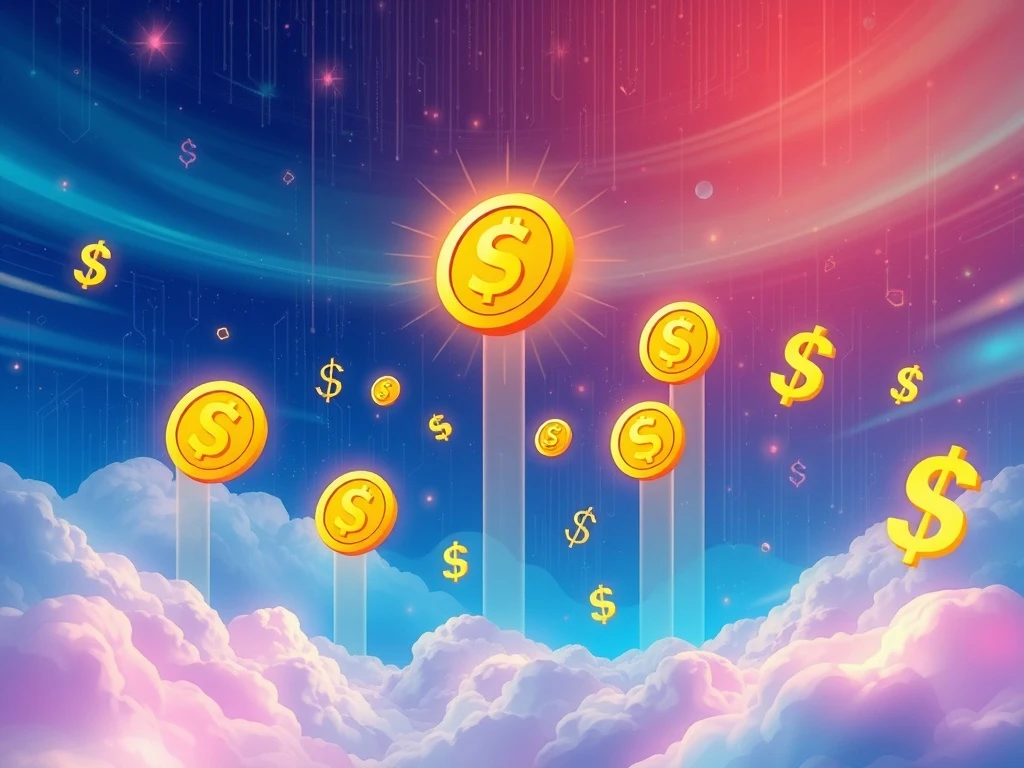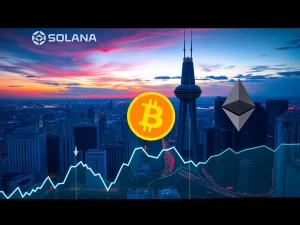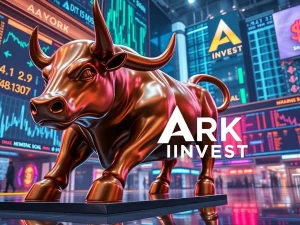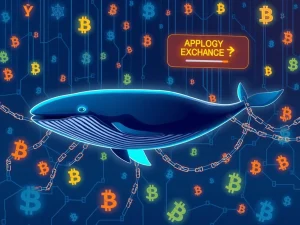SKY Token Soars: $75M Buyback Scheme Fuels Impressive 8% Price Boost

The cryptocurrency market constantly seeks stability and growth. Recently, Sky, a prominent decentralized finance (DeFi) protocol, made significant headlines. Its strategic crypto buyback scheme has notably boosted its native SKY token price. This initiative highlights a growing trend of projects using sophisticated tokenomics to enhance value and investor confidence.
Sky’s Strategic $75M Crypto Buyback Fuels Growth
Sky, formerly known as Maker, has successfully implemented a substantial token buyback program. This initiative, launched in February, has seen the protocol spend a remarkable $75 million. Consequently, the SKY token has experienced an impressive 8% gain over the past six months. This move underscores a calculated effort to strengthen its market position and reward its community.
The rebranding from Maker to Sky occurred in August 2024. This change marked a new chapter for the protocol, focusing on innovation and expansion. On Monday, Sky announced its latest buyback activities. It utilized 5.5 million of its platform’s stablecoin, USDS (USDS), to acquire 73 million SKY tokens. This specific transaction brought the total buyback expenditure to $75 million USDS since the program’s inception in late February. Furthermore, this consistent investment demonstrates Sky’s commitment to its token’s long-term value.
Understanding the Token Buyback Scheme
Token buyback schemes are a popular mechanism within the cryptocurrency space. Projects often employ them to enhance token value and reduce volatility. Essentially, a project repurchases its own tokens from the open market. This action reduces the total circulating supply of the token. By decreasing supply, the theoretical value of the remaining tokens increases, assuming demand remains constant or grows. Therefore, buybacks can create a scarcity effect.
These schemes aim to demonstrate financial health and commitment to token holders. They can also signal strong confidence in the project’s future prospects. For investors, a well-executed buyback can provide a direct boost to their holdings. Moreover, it suggests that the project views its own token as undervalued, prompting further investor interest. This strategy is common in traditional equity markets and is gaining considerable traction in the crypto sector.
Analyzing SKY Token Price Surge and Market Impact
The SKY token price surge commenced with the buyback program on February 24. Sky initially allocated $4.28 million to the program in that month alone. At the time, SKY traded just above 6.3 cents. Since then, the token has climbed to over 6.85 cents, marking an 8.1% increase, according to CoinGecko data. This demonstrates a clear correlation between the buyback efforts and positive price movement.
Sky’s monthly buyback activity varied, with March seeing the largest expenditure. The protocol spent $18.31 million that month, showcasing aggressive market participation. The consistent investment through its stablecoin, USDS, highlights a dedicated approach to price support. While SKY reached a high of 9.6 cents in late July, nearing its all-time peak of just over 10 cents in December, it then experienced a slight correction. This dip mirrored broader market trends. However, it notably failed to fully participate in the wider market recovery observed in mid-August, suggesting the buyback provided a floor rather than explosive growth during that period.
Comparing SKY’s performance to other prominent DeFi tokens provides further context. Uniswap (UNI) and Aave (AAVE), both leading decentralized finance platforms, also saw significant movements. Since Sky initiated its buyback, UNI has gained 6%, while AAVE surged by an impressive 25.8%. Both UNI and AAVE experienced strong recoveries in mid-August. This suggests that while Sky’s buyback was effective, other market factors and protocol-specific developments also played a crucial role in the overall DeFi token performance of similar assets.
DeFi Token Performance: A Broader Perspective
The varying DeFi token performance among protocols like Sky, Uniswap, and Aave illustrates the market’s complexities. While buybacks offer a direct method to influence price, broader market sentiment, technological developments, and regulatory news also impact valuations. Aave’s stronger performance, for instance, might be attributed to its unique lending protocols or recent platform upgrades. Consequently, a holistic view is essential.
Investor confidence in a protocol’s long-term utility often drives sustained growth. While a crypto buyback can provide short-term momentum, fundamental utility, consistent innovation, and robust community engagement are crucial for enduring success. Furthermore, the overall health and expansion of the decentralized finance ecosystem significantly influence individual token prices. Sky’s consistent buybacks likely provided a stable foundation for its price during otherwise volatile periods, offering a degree of resilience.
Other Projects Embrace Crypto Buyback Strategies
The trend of implementing crypto buyback programs extends beyond Sky, becoming a more common strategy in the industry. World Liberty Financial, a crypto platform associated with the Trumps, recently proposed a token buyback and burn program. The project aims to use all its protocol fees to repurchase and permanently destroy its World Liberty Financial (WLFI) token. This proposal emerged as WLFI experienced a significant drop in value following its debut on secondary exchanges, highlighting a need for price stabilization.
WLFI initially dropped over 16% to 23 cents shortly after trading began. However, early investors who acquired the token at 1.5 cents still saw an impressive over 1,400% gain. The proposed buyback and burn mechanism seeks to stabilize and potentially increase WLFI’s value by reducing its circulating supply. This reflects a common strategy for new tokens facing initial market volatility and seeking to build investor confidence.
Similarly, the memecoin creation platform Pump.fun initiated a token buyback scheme for its PUMP token in mid-July. Pump.fun has already spent $66.5 million on this program as of Tuesday. Their buyback plan appears notably successful. PUMP has gained nearly 30% over the past month. It is also up almost 70% from its all-time low on July 29, according to CoinGecko. These examples clearly highlight the increasing adoption and perceived effectiveness of buyback strategies across different crypto sectors, from DeFi to memecoins.
The Mechanics and Implications of Buyback Programs
Buyback programs are not without their nuances and strategic considerations. They involve the careful allocation of a project’s treasury or revenue. The funds used for buybacks could otherwise be invested in development, marketing, or community grants. Therefore, projects must carefully balance these priorities to ensure long-term growth and sustainability. A transparent and well-communicated buyback plan also builds crucial trust within the community, fostering stronger engagement.
Tokenomics, the study of how cryptocurrencies are designed and function within an ecosystem, plays a critical role here. Effective tokenomics ensure long-term sustainability and value accrual for the token. Buybacks are just one component of a broader tokenomic strategy. They can complement other mechanisms like staking rewards, burning fees, liquidity provision, and governance models. A comprehensive approach typically yields the best results for a project and its holders.
The Future of SKY Token and Crypto Buybacks
The continued success of Sky’s buyback program could set a significant precedent for other protocols in the DeFi space. It demonstrates a tangible method for value creation and price stabilization, particularly during market fluctuations. Investors often look for projects with strong tokenomic models that actively manage supply and demand. A consistent crypto buyback program signals proactive management and a clear commitment to token holder value, enhancing the project’s appeal.
However, market conditions remain inherently dynamic. The effectiveness of any buyback program can fluctuate significantly with broader economic trends, regulatory changes, and crypto market cycles. While the SKY token price surge is undeniably positive, sustained long-term growth will also depend heavily on Sky’s ongoing innovation, successful user adoption, and robust ecosystem expansion. The buyback is a tool, not a complete solution.
Ultimately, these buyback initiatives reflect a maturing cryptocurrency market. Projects are increasingly adopting sophisticated financial strategies, mirroring those found in traditional finance. They aim to manage supply, stimulate demand, and provide tangible benefits to their communities. As the industry evolves, such well-planned tokenomic strategies will likely become even more prevalent, shaping the future landscape of digital assets.









